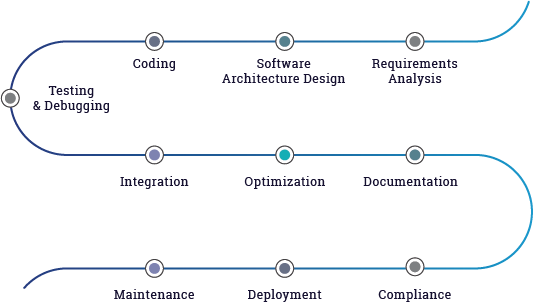Firmware Development
Firmware development is the process of creating and developing the software that is embedded within electronic devices and systems. Firmware is the low-level software that controls the basic functions of a device, such as power management, input/output, and communication with other devices.
Firmware is the core software layer that controls medical devices, ensuring real-time data processing, security, and regulatory compliance. As medical technology advances, firmware development must integrate AI, IoT, cloud connectivity, and cybersecurity to support next-gen healthcare solutions.
Firmware plays a crucial role in medical devices by enabling real-time processing, device control, connectivity, and security. As the backbone of embedded medical systems, firmware must ensure accuracy, reliability, regulatory compliance, and cybersecurity while supporting AI-driven diagnostics, IoT-enabled healthcare, and real-time monitoring.
At Silmates, we offer end-to-end firmware development solutions for medical devices, ensuring seamless integration with sensors, wireless connectivity, cloud systems, and AI models while complying with FDA, IEC 62304, ISO 13485, HIPAA, and GDPR.

Firmware Development includes various stages, including:-
Requirements gathering: Understanding the system requirements and defining the functional and performance specifications for the firmware.
Design: Creating a detailed design of the firmware architecture, including the algorithms and data structures that will be used to implement the required functionality.
Implementation: Writing the code to implement the firmware, including the low-level control routines and the higher-level algorithms and data structures.
Testing: Performing extensive testing of the firmware, including unit testing, integration testing, and system-level testing, to verify its functionality and performance.
Integration: Integrating the firmware with the hardware and other components of the system, and verifying that the entire system operates as expected.
Firmware development requires expertise in low-level software development, including experience with assembly language, C programming, and microcontroller architecture. It also requires an understanding of the system requirements and the underlying hardware, as well as the ability to debug and optimize the firmware for performance and efficiency.
Firmware is a critical component of embedded systems, as it provides the basic control and functionality of the device. As a result, firmware development must be done with a high degree of care and attention to detail, to ensure that the firmware is reliable, efficient, and secure.
Process Flow Diagram

